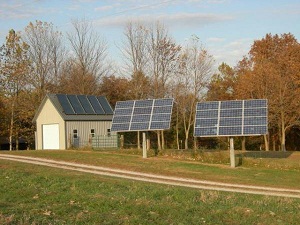Solar news: The real facts behind the solar industry
 While Grover Norquist’s conservative American Enterprise Institute (AEI) decided to host a conference to speak out against solar and renewable energy in general, the industries didn’t notice. They steamrolled forward last week, gaining more ground internationally as well as domestically.
While Grover Norquist’s conservative American Enterprise Institute (AEI) decided to host a conference to speak out against solar and renewable energy in general, the industries didn’t notice. They steamrolled forward last week, gaining more ground internationally as well as domestically.
The libertarian think tank, AEI, held a conference Feb. 24, called “Clean, Green, Renewable: What Could Go Wrong?,” where economists Timothy Considine, and Benjamin Zycher argued against renewable energy. The two argued that incentivizing renewable energy is not in the public’s interest and will cost the U.S. This is despite the continued falling costs of renewable energy, and Zycher actually argued that the cost of solar power rose 63 percent since 2001.
That seems to fly in the face of exactly what the solar industry’s been doing over the last few years, which is significantly lowering the cost of solar. And those cost reductions continue through a variety of efforts collaborative and otherwise. For instance, the SunSpec Alliance recently announced its first round of awards for companies and organizations that are working to reduce the cost of solar power through standardizing certain aspects of technologies.
There’s no lack of work going into the effort to reduce the costs of solar further. The Cleantech Open relaunched last week to fund promising new solar and renewable energy technologies. The event helps match start-ups with investors to help the companies grow.
Solar is growing—across the world. India is likely to become a major new market for solar as the country tries to address its pressing energy needs with a population of over 1 billion. To help industrialize and bring the country’s people out of poverty, the nation is increasingly looking to solar and renewable energy. And people are paying attention. Last week the country held Solar Future: India II, a conference addressing how to bring more solar into the country.
A critical thing for solar is local support. As cities, states and countries work to increase the amount of renewable energy in their local portfolios, it’s important that they offer incentives to spur growth, according to a new Lux Research report. The report found that renewable energy incentives are imperative to help cities develop and redevelop areas and to reduce the impact of energy use on the local grid.
Minnesota Power gets it. The utility recently boosted its renewable energy incentives in an effort to increase the amount of solar in its region. The utility is now offering non-profits up to $4,750 per kilowatt for going solar. Homeowners can qualify for more than $2,000 per kilowatt for installations and more for systems with locally made components, and that’s on top of the federal tax incentives.
Georgia’s solar industry, however, is on the other side of things. Though power-purchase agreements are technically legal in the state, the industry is supporting legislation that makes it clear. Senate Bill 401 would ensure that utility customers could install a system under a third-party ownership agreement. But utilities are bristling at the idea, contending that such agreements infringe on their territory and will force them to raise rates.
The U.S. military gets it and is increasing its use of solar. Borrego Solar recently completed a 3.4-megawatt installation at Edwards Air Force Base. It’s Borrego’s first installation with the military, but it’s not likely its last. The military is looking toward solar, wind and other renewables to increase its energy independence, and over the next few years, it will substantially increase the amount of renewable energy it uses across all branches.
Image courtesy of the Illinois Solar Tour.



